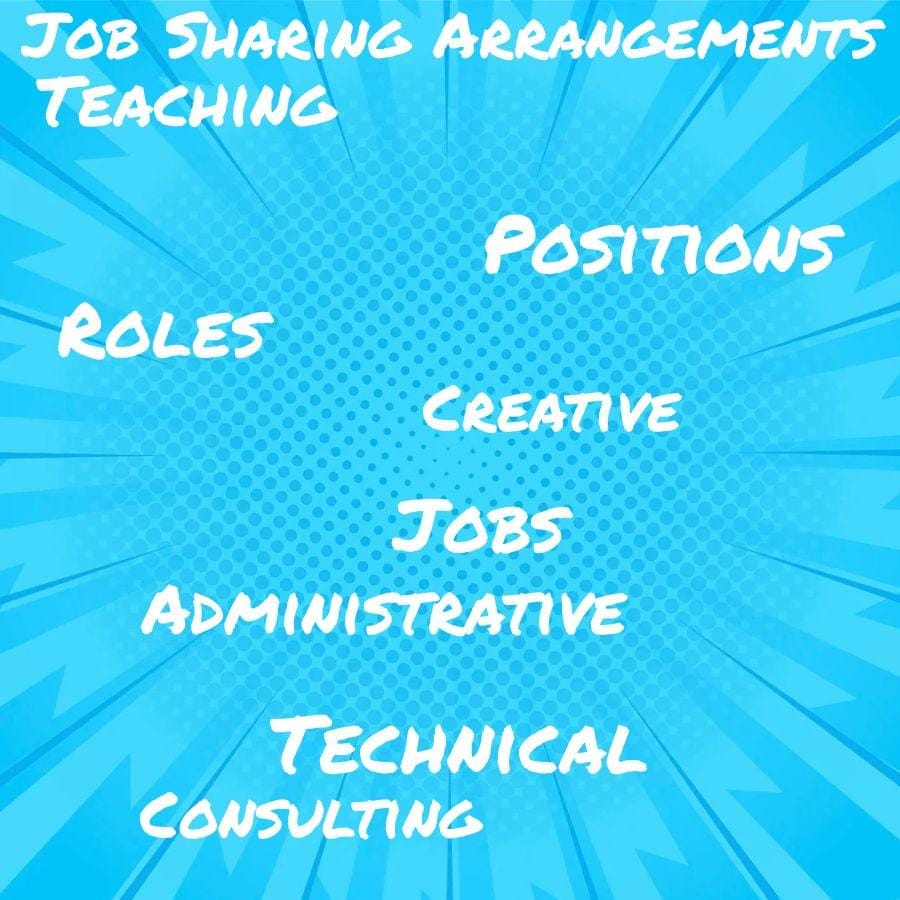Job sharing arrangements are best suited for positions that require collaboration, such as teaching, administrative roles, customer service, and creative roles.
Job sharing is an increasingly popular way for employers to increase productivity and employee satisfaction. It involves two or more people working together to share the responsibilities of a single job.
While it can be a great way to increase flexibility and job satisfaction, it isn’t suitable for every type of job. In this blog post, we’ll take a look at some of the types of jobs that are best suited for job sharing arrangements.
1. Administrative Jobs: Administrative jobs such as receptionists, secretaries, data entry clerks, customer service representatives and other office-based roles are well-suited for job sharing because they often involve repetitive tasks that can easily be divided between two people.
2. Professional Positions: Professional positions such as lawyers, doctors and accountants can also benefit from job sharing arrangements as both parties involved in the arrangement will have more time off to pursue their own interests or spend time with family while still maintaining their professional responsibilities.
3. Creative Roles: Creative roles such as graphic designers, web developers or writers can also be great candidates for job sharing since these types of roles often require collaboration between two individuals in order to produce the best results possible.
4. Technical Positions: Technical positions such as IT
Administrative Positions

Administrative positions are particularly well-suited to job sharing because they often involve a variety of tasks that can be divided between two people. This allows each person to specialize in certain areas, while also providing support and assistance when needed.
Examples of administrative jobs that could benefit from job sharing include receptionists, office managers, executive assistants, customer service representatives, data entry clerks, and bookkeepers. Job sharing arrangements can help reduce costs associated with hiring full-time staff members while still ensuring the necessary work is completed efficiently and effectively.
It provides employees with more flexibility in terms of scheduling and workloads which can lead to improved morale and productivity levels within the workplace.
Teaching Positions
Teaching positions are particularly well-suited for job sharing, as they often involve a large amount of work that can be divided between two people. Job sharing in teaching positions allows two teachers to share the workload and responsibilities of one full-time position, while still providing students with the same level of instruction and support.
This arrangement also allows teachers to have more time off during the school year, which can help them maintain a healthy work/life balance. Job sharing in teaching positions can provide an opportunity for experienced educators to mentor new or inexperienced teachers who may not yet be ready for a full-time role.
Consulting Roles
Consulting roles are particularly well-suited to job sharing, as they often involve short-term projects that require a high level of expertise. In these cases, two people can share the workload while still providing the same quality of service.
Job sharing in consulting roles also allows employers to benefit from having two different perspectives on a project, which can lead to more creative solutions and better results overall. Job sharing in consulting roles provides an opportunity for employees to gain experience in multiple areas without having to commit full time hours or take on too much responsibility at once.
Creative Roles
Creative roles, such as graphic designers, web developers, and writers, are particularly well-suited to job sharing arrangements. This is because these types of jobs often require a high level of creativity and collaboration between two or more people in order to produce the best results.
In creative roles, job sharing allows two individuals with different skillsets and perspectives to work together on a project. This can lead to innovative solutions that wouldn’t have been possible if only one person was working on it.
Having multiple people involved in the project can help ensure that tasks are completed quickly and efficiently since each individual can focus on specific aspects of the project while still being able to collaborate with their partner when needed. Job sharing also provides an opportunity for creative professionals who may not be able to commit full-time hours due to other commitments (such as family or other part-time jobs) but still want the flexibility of working in their chosen field.
By splitting up the workload between two people who both have experience in a particular area of expertise, employers can benefit from having access to experienced professionals without needing them all at once or paying them full-time salaries.
Technical Roles
Technical roles, such as software developers, web designers, and IT professionals, are particularly well-suited for job sharing because they require specialized skills that can be divided between two individuals. Job sharing allows each individual to focus on their particular area of expertise while still working together to complete tasks.
This arrangement also allows for more flexibility in scheduling and workloads since both individuals can work at different times or take turns completing certain tasks. Having two people with different perspectives on the same project can lead to creative solutions that may not have been considered otherwise.
Customer Service Jobs
Job sharing is a type of flexible work arrangement in which two or more people share the responsibilities and duties of one full-time job. In customer service roles, this can be beneficial as it allows for greater coverage during peak hours and provides customers with multiple points of contact.
Having two people working together on the same role can provide different perspectives and ideas that may not have been considered by a single individual. This can lead to improved customer satisfaction and better problem solving skills when dealing with difficult customers or situations.
Job sharing in customer service roles also helps to reduce employee burnout as each person has someone else to rely on for support throughout their shift.